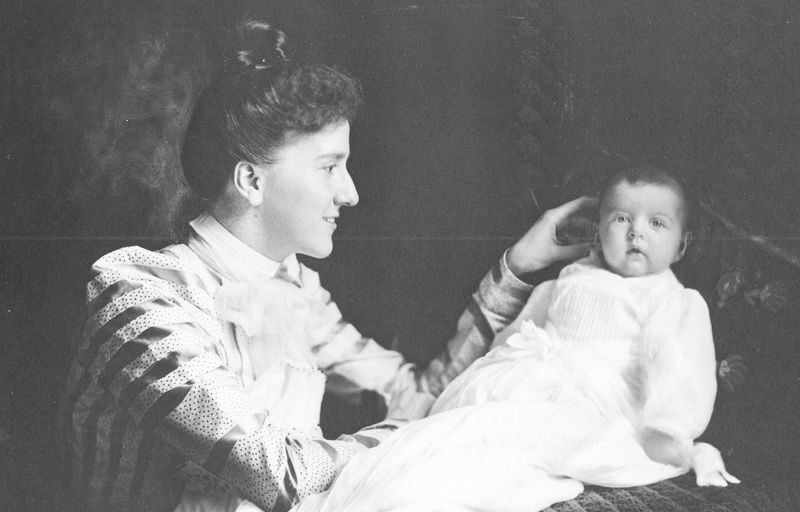“Stork Comes to Biltmore,” read a front-page headline in the Aug. 23, 1900, edition of the Asheville Citizen. The previous evening, the article explained, Cornelia Stuyvesant Vanderbilt — daughter of George and Edith Vanderbilt — was born.
Like a doting parent, the paper lavished generous praise on the new arrival, noting:
“The little stranger is a Buncombe baby — pretty as new babies go — but with the Buncombe birthright of the mountain’s health its days of baby hood will dot in dimpled sweetness and the fairy lines of beauty blend in a vision fitting to its home on the great estate.”
The Asheville Citizen went on to reveal that the official announcement from the Vanderbilts arrived shortly after midnight. Because of this, many eager reporters were delayed in their coverage. “How the news was gathered and sent has a story with a smiling side to those who came in early possession,” the Aug. 23 article noted, “but some of the fraternity were asleep and for these there is no smile.”
Among those present during the birth, the article continued, was Dr. Samuel Westray Battle, a prominent physician who first arrived in Asheville in 1885. (For more on Battle, see “Asheville Archives: ‘More Than a Citizen,’” Sept. 26, 2017, Xpress.)
Cornelia’s arrival made headlines beyond Western North Carolina, as well. The Spartanburg Journal praised both baby and mother, declaring:
“A new star has appeared at famous Biltmore, and the charming mistress of this most gorgeous home is smiling upon her first born, a tiny girl called Cornelia Stuyvesant Vanderbilt, and the world shares in her new found happiness, for the young mother is a gentle woman, highly cultivated, with lofty ideals and noble purposes.”
Shortly after her birth, however, the young family headed north to New York before making their way across the Atlantic to attend the World’s Fair in Paris. The New York Sunday Journal ran a feature during their stint in the city, including a photo of Cornelia with her father in Central Park.
Before their departure from Asheville, The Semi-Weekly Citizen published a poignant piece about the Vanderbilts planting a 12-foot magnolia acuminata sapling near the estate’s bass pond. The tree, the paper noted, “is expected to be 60 feet above the ground when little Cornelia reaches the age of 20 years.”
The brief article concluded:
“The little girl placed her tiny hand upon the tree, and her parents gave expression to the hopes the child cannot yet express in words, that it may be always ‘fed by honied rains and delicate air and haunted by the starry head of her whose gentle will has changed their fate and made their life a perfumed altar flame.'”
Sadly, the tree succumbed to decay and was removed in 2008.
Editor’s note: Peculiarities of spelling and punctuation are preserved from the original documents.




Cornelia Vanderbilt’s life after her Biltmore childhood is also interesting: https://blueridgecountry.com/newsstand/magazine/the-strange-post-biltmore-life-of-cornelia-vanderbilt/.